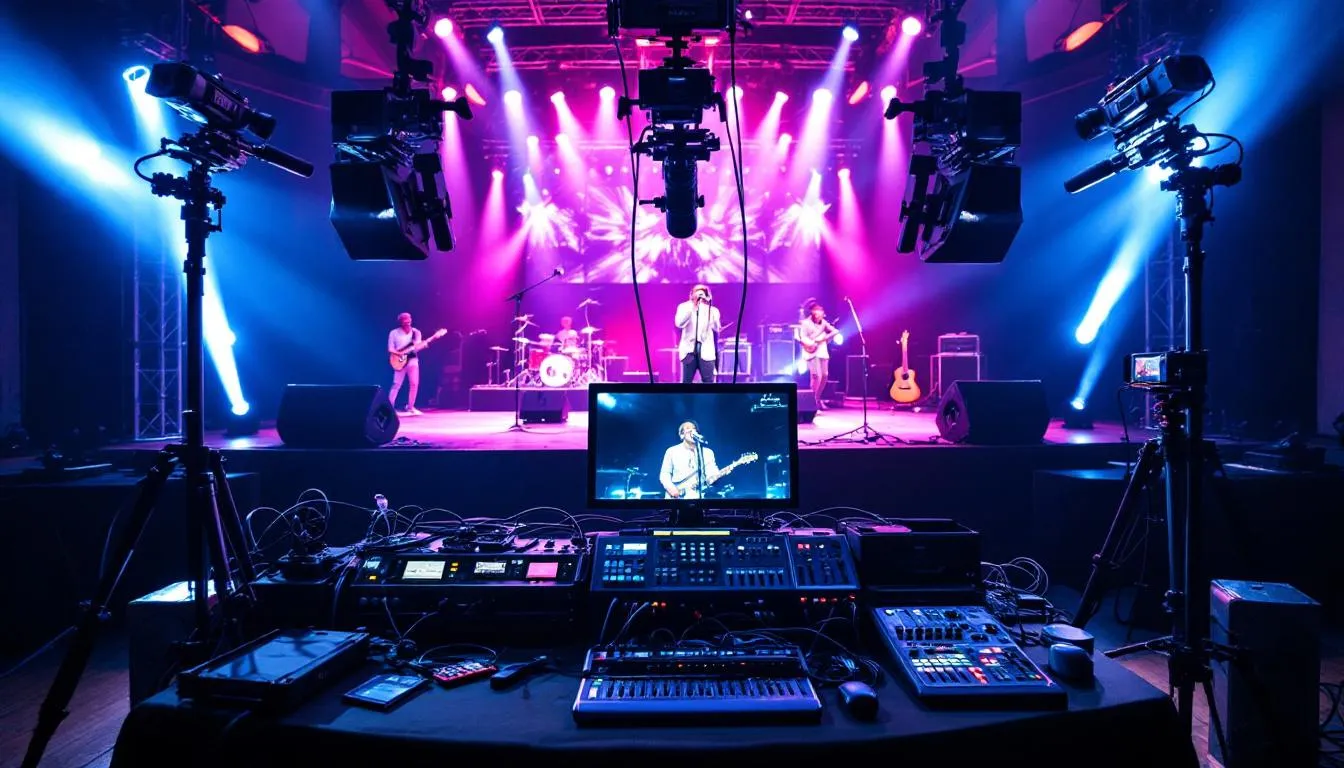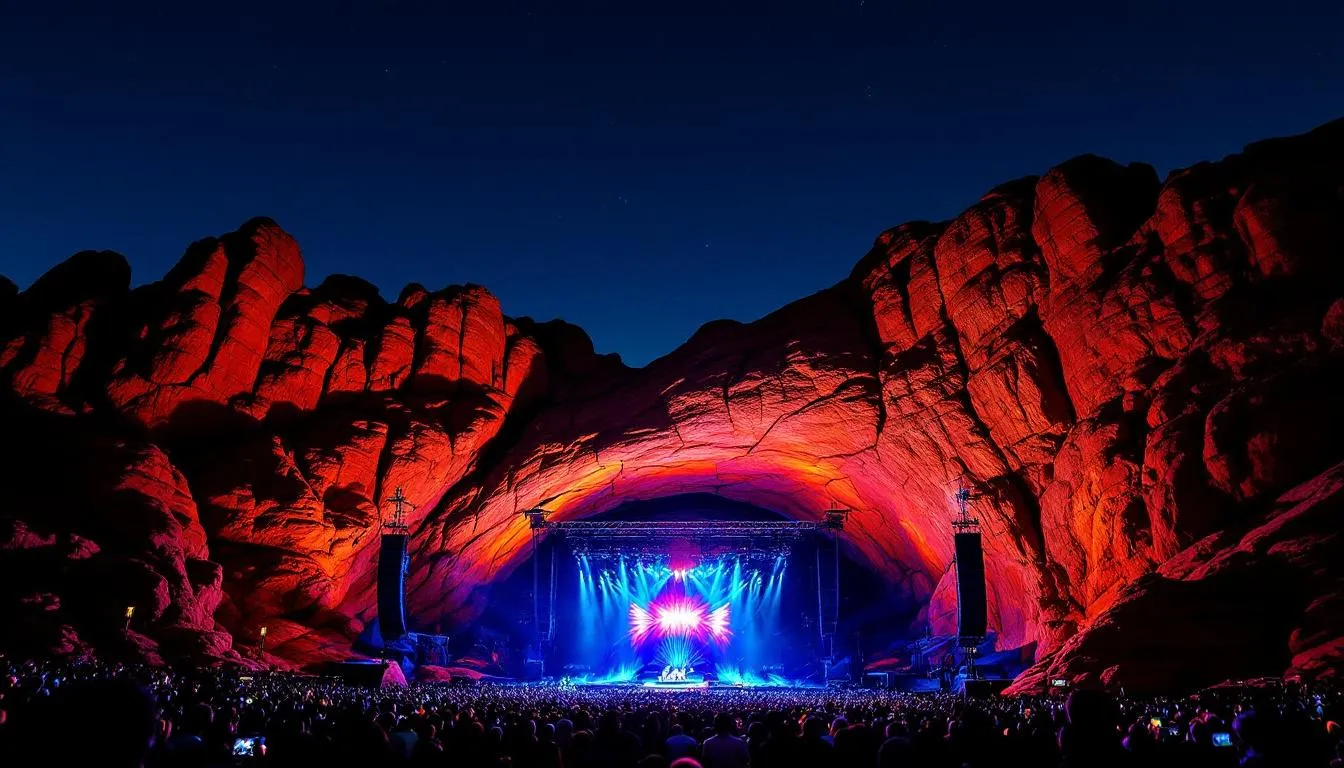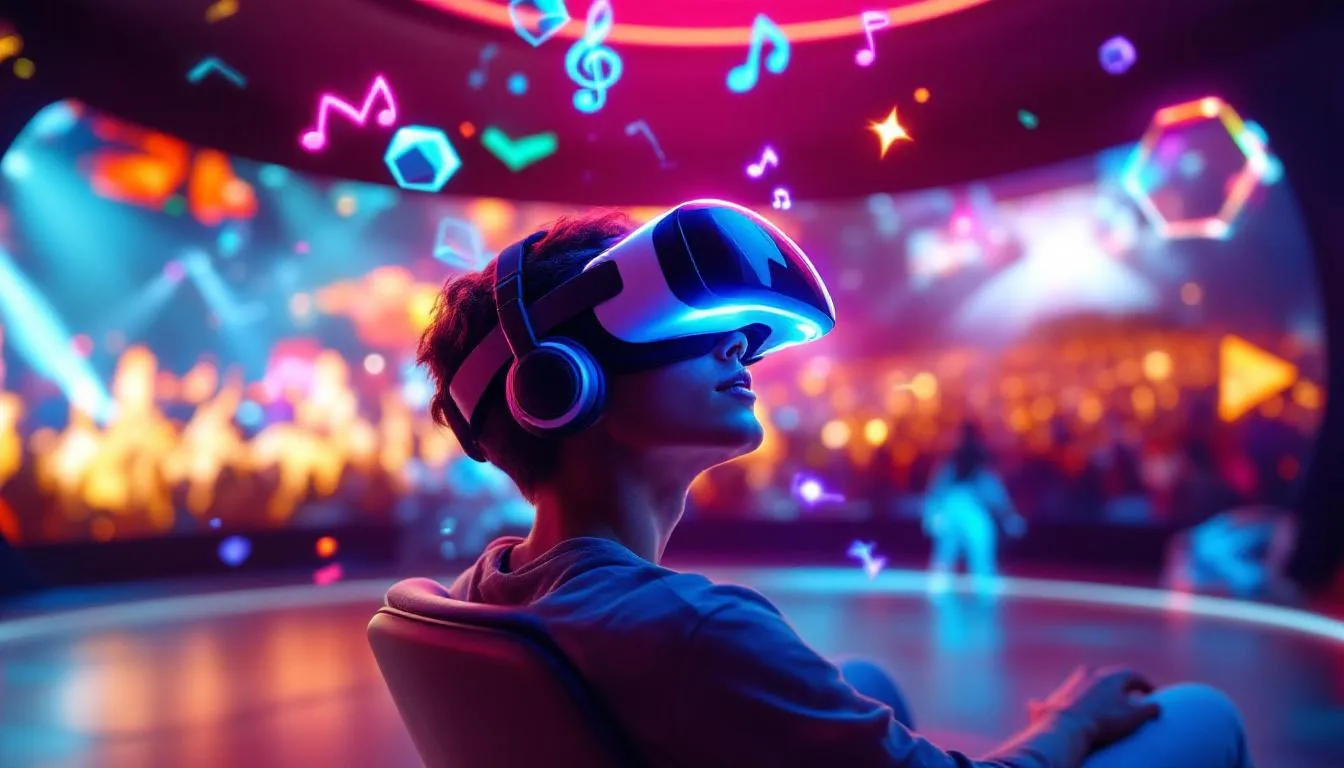
The music industry experienced a seismic shift when live performances moved online, transforming how we experience concerts forever. What started as a pandemic necessity has evolved into a thriving ecosystem where millions of music lovers can access world-class performances from their living rooms. Whether you’re seeking front-row access to sold-out shows or discovering new artists from around the globe, online concert live streaming offers unprecedented opportunities to experience music in ways never before possible.
This comprehensive guide will take you through everything you need to know about streaming live music from home, from choosing the right platform to optimizing your setup for the ultimate viewing experience.
Online concert live streams represent real-time broadcasts of musical performances delivered directly to your device through internet connections. Unlike traditional recorded concert videos that you might find on demand, these live streams capture performances as they happen, creating an immediate connection between artists and audiences regardless of geographical boundaries.
The technology behind live concert streaming involves sophisticated capture systems using high-definition cameras, professional audio mixers, and encoding software that converts the performance into digital streams. These streams are then distributed through various platforms where viewers can access them using their preferred device.
Interactive features set modern concert streams apart from passive video viewing. Many platforms offer multiple camera angles, allowing you to switch between wide venue shots, close-ups of individual musicians, or behind-the-scenes footage. Live chat functionality creates community experiences where fans from around the world can share reactions and connect with fellow music enthusiasts in real-time.
The difference between live streaming and recorded concert videos lies in the immediacy and authenticity of the experience. Live streams capture the spontaneous energy of performances, including unexpected moments, artist interactions with the audience, and the unique atmosphere that makes each show special.
The landscape of concert streaming services has expanded dramatically, offering diverse options for every type of music lover and budget. Understanding the strengths of each platform helps you choose the right service for your musical preferences and viewing habits.
Premium platforms provide the highest quality experiences with professional production values and exclusive content access. These services typically operate on subscription models that give you unlimited access to extensive libraries of live performances and on-demand content.
Specialized platforms like nugs.net have carved out significant market share by focusing exclusively on live music experiences. Their subscription plans start around $14.99 per month and provide access to thousands of concerts from artists ranging from jam bands like the Disco Biscuits to electronic acts and major rock performers. The platform’s strength lies in its comprehensive archive and high-quality audio recordings that appeal to serious music collectors.
Qello Concerts offers another premium approach, combining live streams with an extensive catalog of classic concert films and documentaries. Their service provides both monthly and annual subscription options, with annual plans offering substantial savings compared to month-to-month billing.
Many premium services include free trial periods, typically lasting 7 days, allowing you to explore their catalogs before committing to a subscription. Cancellation policies vary by platform, but most allow you to cancel anytime without penalty, though you’ll retain access until your current billing period ends.
Free options provide excellent entry points for exploring online concert experiences without financial commitment. YouTube Live has become a dominant platform for free concert streams, with many artists maintaining dedicated channels where they regularly broadcast performances.
Social media platforms have embraced live music streaming as engagement tools. Facebook Live, Instagram Live, and TikTok Live all host regular concert broadcasts, particularly from emerging artists building their fan bases. These platforms excel at creating intimate, interactive experiences where artists can directly respond to viewer comments and requests.
NPR Music Front Row stands out among free platforms for its curated approach to live music. The service regularly features performances from emerging and established artists, recorded in high-quality studio settings that rival paid platforms.
Major music festivals have increasingly embraced free streaming as marketing and accessibility tools. Events like Coachella, Glastonbury, and Burning Man now offer live streams of select performances, allowing global audiences to experience these iconic festivals without attending in person.

Accessing online concert live streams requires minimal technical setup, but understanding device compatibility and requirements ensures optimal viewing experiences. Modern streaming services support virtually every internet-connected device, giving you flexibility in how and where you watch performances.
Smartphones and tablets offer the most convenient viewing options, with dedicated apps available for iOS and Android systems. These apps typically provide full functionality, including multiple camera angles, chat features, and the ability to purchase merchandise directly from the stream interface.
Smart TV compatibility has become increasingly important as viewers seek larger screen experiences. Apple TV, Fire TV, and Android TV all support major streaming platforms through downloadable apps. Many smart TVs include built-in apps for popular services, eliminating the need for additional hardware.
Setting up your account varies by platform but generally follows similar patterns. Most services require basic registration with email verification, followed by subscription selection or individual concert purchases. Payment processing typically accepts major credit cards and digital payment methods like Apple Pay or Google Pay.
Internet speed requirements depend on your desired streaming quality. For smooth HD streaming, you’ll need a consistent connection of at least 5 Mbps, while 4K streaming requires 25 Mbps or higher. Adaptive streaming technology automatically adjusts quality based on your connection speed, ensuring uninterrupted viewing even if bandwidth fluctuates.
The technical quality of online concert live streams has reached impressive levels, with many platforms now offering experiences that rival or exceed what you might hear and see from mid-tier seats at physical venues. Understanding quality options helps you optimize your setup and choose services that match your equipment capabilities.
HD Stereo represents the baseline quality for most premium platforms, delivering 1080p video resolution with high-quality stereo audio. This format works well on most devices and internet connections while providing clear, detailed viewing experiences.
4K UHD streaming has become increasingly common, particularly for major artist performances and high-profile venue streams. This ultra-high-definition format requires compatible displays and robust internet connections but delivers stunning visual clarity that captures every detail of stage productions and artist performances.
Advanced audio technologies significantly enhance the listening experience beyond standard stereo formats. Dolby Vision and Dolby Atmos support create immersive soundscapes that position you within the venue’s acoustic environment. These technologies work particularly well with quality headphones or surround sound systems.
Binaural audio recording techniques create three-dimensional sound experiences that simulate the way human ears naturally hear live performances. This technology works exceptionally well with headphones, creating an intimate listening experience that can make you feel like you’re sitting directly in front of the performers.
The diversity of artists and venues embracing live streaming has created unprecedented access to performances across every musical genre and venue type. From intimate club shows to grand symphony halls, online platforms now showcase the full spectrum of live musical experiences.
Major artists have discovered that regular streaming schedules help maintain fan engagement between tours and album releases. Radiohead pioneered many streaming innovations, regularly offering high-quality broadcasts of their performances and experimental sessions. Nine Inch Nails has embraced streaming technology to create immersive visual experiences that complement their electronic-industrial sound. LCD Soundsystem frequently streams DJ sets and live performances, connecting with fans through intimate venue shows and festival appearances.
Iconic venues have become streaming destinations in their own right. The Sydney Opera House regularly broadcasts classical and contemporary performances, allowing global audiences to experience this architectural marvel’s legendary acoustics. Amsterdam’s Ziggo Dome has become a favorite venue for electronic and pop artists, offering state-of-the-art production values that translate beautifully to streaming formats. The Walt Disney Concert Hall in Los Angeles provides some of the highest-quality classical music streams available, showcasing both the venue’s stunning architecture and exceptional acoustic properties.

Festival streaming has created entirely new ways to experience large-scale music events. Burning Man 2022 offered extensive streaming coverage that captured the festival’s unique art installations and diverse musical performances. The Pitchfork Music Festival has made streaming a core component of their event strategy, providing multiple simultaneous streams from different stages. Ultra Music Festival’s streaming coverage has become an event unto itself, attracting millions of viewers who experience the festival’s energy from home.
Electronic music has found particularly fertile ground in streaming platforms, where the genre’s emphasis on visual production and technological innovation aligns perfectly with digital delivery methods. Boiler Room sessions have become legendary for showcasing underground DJ talent in intimate settings, creating a template that many other platforms have adopted.
Festival performances from Above & Beyond regularly draw massive streaming audiences, particularly for their Group Therapy events that combine emotional electronic music with stunning visual productions. The Chemical Brothers have embraced streaming technology to share their elaborate visual shows, which often work even better on high-quality home displays than in large venue settings. Kraftwerk’s performances represent the intersection of electronic music history and cutting-edge streaming technology, offering rare opportunities to experience these pioneering artists.
Unique location streams have pushed creative boundaries beyond traditional venue constraints. FKJ’s performance at Salar de Uyuni in Bolivia created a surreal streaming experience that combined electronic music with one of the world’s most stunning natural landscapes, demonstrating how streaming can create impossible-to-replicate live experiences.
Rock and alternative music streaming encompasses both classic archive performances and contemporary live shows. Historic footage from Nirvana, The Cure, and Red Hot Chili Peppers provides access to legendary performances that many fans never had the opportunity to experience live.
Modern alternative acts like Bon Iver, James Blake, and Tame Impala have embraced streaming as a creative medium, often using the format to experiment with intimate acoustic arrangements or elaborate visual productions that complement their studio recordings.
Full album live performances have become popular streaming formats, allowing artists to present their work in cohesive listening experiences. These shows often include detailed explanations of song meanings and creative processes, providing deeper connections between artists and fans.
The advantages of streaming live concerts extend far beyond simple convenience, creating entirely new ways to experience and interact with music. These benefits have attracted both casual listeners and dedicated music enthusiasts who discover that online viewing can complement or even enhance traditional concert experiences.
Access represents perhaps the most significant advantage of online concert live streaming. Sold-out shows become available to unlimited audiences, eliminating the frustration of missing popular performances due to venue capacity limitations. Geographic barriers disappear entirely, allowing fans to experience artists who might never tour their regions or attend festivals on different continents.
Cost savings add up significantly when compared to traditional concert attendance. A typical concert experience includes ticket prices, transportation, parking, food, and accommodation costs that can easily exceed $200-300 per event. Monthly streaming subscriptions costing $15-45 provide access to dozens of performances, creating substantial value for dedicated music fans.
The front-row experience available through streaming often surpasses what most concert-goers can afford at physical venues. Multiple camera angles provide perspectives impossible to achieve from any single seat, including close-up views of instrumental techniques, behind-the-scenes footage, and aerial shots of stage productions.
Unlimited replay access transforms concerts from single-experience events into lasting resources. You can revisit favorite performances, catch details you missed during initial viewing, or share specific moments with friends. This repeatability particularly benefits musicians who want to study performance techniques or music educators using concerts as teaching materials.

Optimizing your technical setup significantly impacts your streaming experience quality, though most platforms work well with basic equipment. Understanding minimum requirements and enhancement options helps you make informed decisions about equipment investments.
Internet connectivity forms the foundation of quality streaming experiences. While 5 Mbps handles HD content adequately, inconsistent connections can cause buffering and quality drops. If multiple household members use internet simultaneously, consider upgrading to higher bandwidth plans to ensure smooth streaming during peak usage times.
Audio equipment represents the most impactful upgrade for most viewers. Quality headphones or speakers dramatically enhance the listening experience, particularly for platforms offering surround sound or binaural audio. Many music enthusiasts find that investing in good audio equipment transforms streaming from casual viewing into immersive musical experiences.
Display considerations depend on your viewing preferences and available space. Large smart TVs provide impressive visual experiences for group viewing, while high-resolution computer monitors offer excellent individual viewing with typically superior color accuracy and refresh rates.
Common streaming issues usually stem from network connectivity problems or outdated apps. Restarting your router, updating streaming apps, and closing unnecessary programs often resolve most problems. Most platforms provide customer support through help sections, live chat, or email assistance to help troubleshoot persistent issues.
Understanding the economics of concert streaming helps you choose services that provide the best value for your musical interests and viewing habits. Pricing models vary significantly between platforms, with options ranging from individual concert purchases to comprehensive all-access subscriptions.
Monthly subscription costs typically range from $14.99 for basic services to $44.99 for premium platforms with extensive archives and exclusive content. Mid-tier services around $24.99 monthly often provide the best balance of content variety and price for most users.
Individual concert purchases offer flexibility for occasional viewers or those interested in specific artists. Prices typically range from $10-50 per event, depending on artist popularity and production quality. This model works well for viewers who prefer selective viewing rather than comprehensive access.
Annual subscription plans provide significant savings compared to monthly billing, often offering 20-30% discounts for upfront payment. These plans work particularly well for dedicated music fans who regularly watch multiple streams per month.
Student discounts and family plans expand accessibility for different user groups. Many platforms offer 50% student discounts with valid educational email addresses, while family plans allow multiple account access for $5-10 additional monthly fees.
The evolution of concert streaming technology continues accelerating, with emerging innovations promising even more immersive and interactive experiences. Understanding these trends—including why partnering with live stream companies is becoming an essential strategy—helps viewers anticipate upcoming features and artists plan for new creative possibilities.
Virtual reality integration represents the most significant frontier in concert streaming technology. VR concerts using platforms like Oculus Quest or HTC Vive create three-dimensional experiences where viewers can move around virtual venues, choose their viewing positions, and interact with other attendees. While current VR adoption remains limited, improving hardware and content quality suggest broader mainstream acceptance in coming years.
360-degree video streaming provides stepping-stone technology toward full VR experiences. These streams allow viewers to control their viewing angle using mouse controls or device movement, creating more engaging experiences than traditional fixed-camera broadcasts. The technology works on standard devices without specialized equipment, making it more accessible than full VR implementations.
Interactive audience participation features are expanding beyond simple chat functions. Some platforms now offer real-time voting on setlists, virtual applause that performers can hear, and even opportunities for selected audience members to appear on video walls during performances.
Hybrid events combining in-person and online audiences represent an increasingly popular model that maximizes both revenue streams and accessibility. These events often feature special content for online viewers, such as exclusive interviews, behind-the-scenes footage, or different camera angles unavailable to physical attendees.
AI-powered personalization systems are beginning to appear on major platforms, offering customized concert recommendations based on listening history, preferred genres, and viewing patterns. These systems may eventually provide personalized camera angles, audio mixes, or supplementary content tailored to individual preferences.

The integration of blockchain technology for ticketing and digital merchandise authentication addresses concerns about fraud and creates new opportunities for exclusive digital collectibles. Some platforms now offer NFT concert memorabilia or limited-edition digital items that verify attendance at specific streaming events.
Enhanced social features continue developing to recreate the communal aspects of concert attendance. Virtual watch parties, synchronized viewing with friends, and shared reaction features help bridge the social gap between online and in-person experiences.
Online concert live streaming has fundamentally transformed how we experience music, creating opportunities that were unimaginable just a few years ago. From intimate acoustic sessions with your favorite artists to front-row access at the world’s most prestigious venues, streaming platforms now offer experiences that often surpass traditional concert attendance in terms of quality, convenience, and value.
The technology continues evolving rapidly, with VR experiences, interactive features, and enhanced audio quality pushing the boundaries of what’s possible in digital entertainment. Whether you’re a casual music fan looking for convenient access to occasional performances or a dedicated enthusiast seeking comprehensive access to live music from around the world, there’s never been a better time to explore the rich ecosystem of online concert and event streaming.
Start your journey by taking advantage of free trial offers from major platforms, experiment with different viewing setups to find what works best for your space and equipment, and discover how online concert live streaming can complement and enhance your musical experiences. The future of live music is happening right now, and it’s more accessible than ever before.